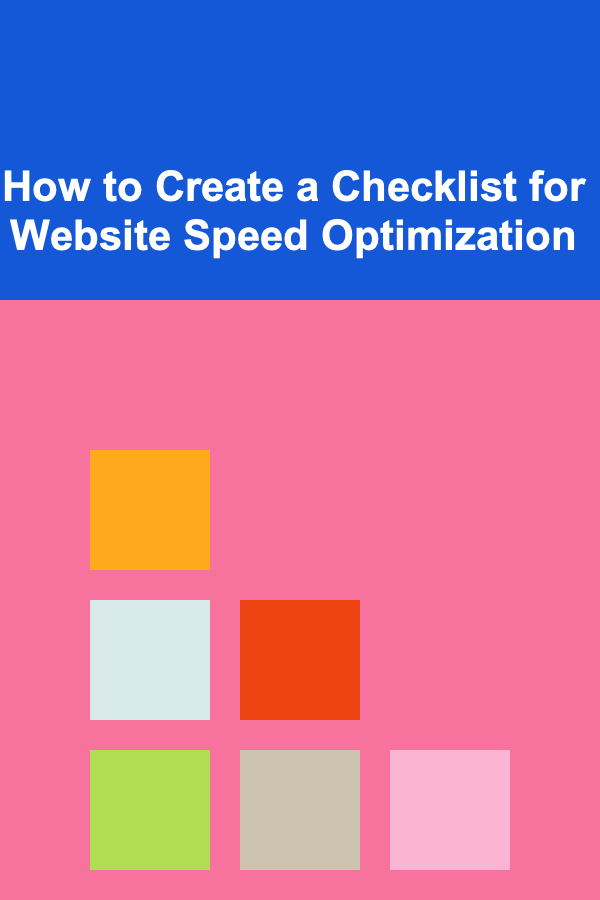
Becoming a UX/UI Designer: Key Strategies for Crafting User-Centered Designs
ebook include PDF & Audio bundle (Micro Guide)
$12.99$10.99
Limited Time Offer! Order within the next:

UX/UI design is a dynamic and evolving field that plays a central role in creating effective, user-friendly products. As technology advances and user expectations grow, the importance of designing intuitive, aesthetically pleasing, and functional experiences has never been greater. Becoming a successful UX/UI designer requires a blend of technical knowledge, creativity, empathy, and a user-centered mindset.
This guide provides a roadmap for aspiring UX/UI designers, focusing on essential strategies and actionable steps for crafting designs that prioritize user needs while balancing business goals and technical constraints.
Understand the Core Principles of UX/UI Design
Before diving into the technical aspects of design, it's crucial to understand the foundational principles of UX (User Experience) and UI (User Interface) design. These two disciplines, while closely related, focus on different aspects of the product design process.
UX Design Principles:
- Usability: The design should be easy to use, intuitive, and efficient. This includes creating clear navigation, ensuring smooth interaction flows, and minimizing user confusion.
- Accessibility: Design should be inclusive, meaning it should be usable by people with various disabilities, such as those with visual or auditory impairments.
- User-Centered Focus: UX design is fundamentally about understanding the user. This requires empathy and knowledge of the users' needs, behaviors, and pain points.
UI Design Principles:
- Consistency: The visual elements should remain consistent throughout the product, helping users understand how to interact with different parts of the interface.
- Visual Hierarchy: Information should be organized in a way that guides the user's attention and makes the interface easy to navigate.
- Responsiveness: UI design must adapt seamlessly to different devices and screen sizes, ensuring a positive experience across mobile, tablet, and desktop platforms.
Actionable Step:
- Invest time in understanding these principles. Read foundational books like Don't Make Me Think by Steve Krug for UX and The Design of Everyday Things by Don Norman for a deep dive into human-centered design.
Master User Research
The foundation of any successful UX/UI design is a thorough understanding of the target users. User research is a critical step in identifying user needs, pain points, behaviors, and goals. Without this insight, your design will be based on assumptions rather than real data, which can lead to suboptimal user experiences.
Key User Research Methods:
- Surveys and Questionnaires: These are great for gathering quantitative data on user preferences, needs, and challenges.
- User Interviews: Conduct one-on-one interviews with users to dive deep into their experiences, motivations, and frustrations.
- Usability Testing: Test prototypes or live products with real users to identify pain points, navigation issues, and opportunities for improvement.
- Analytics Review: Use analytics tools like Google Analytics to identify how users interact with your existing product and pinpoint areas that need improvement.
Actionable Step:
- Start by conducting a small-scale user interview or survey to better understand your audience. Create user personas based on the insights you gather, which will serve as a guide for your design decisions moving forward.
Learn the Design Process: From Research to Prototyping
A structured design process ensures that the product is not only aesthetically pleasing but also functional and user-friendly. The design process typically follows a series of steps, but it's not always linear. Iteration is key.
1. Research and Ideation:
- Gather information about the user, their environment, and their goals. Based on the insights from user research, define the problem you're trying to solve and ideate multiple solutions.
2. Wireframing:
- Begin by sketching low-fidelity wireframes to map out the basic structure and layout of the product. This helps visualize the flow of interaction and user journey without being distracted by design details.
3. Prototyping:
- Once the wireframes are validated, create interactive prototypes using tools like Figma, Sketch, or Adobe XD. These prototypes simulate how the product will behave, allowing you to test and refine the user interactions.
4. User Testing:
- After building a prototype, conduct usability testing to validate your design choices. Collect feedback and observe users' interactions to ensure the design aligns with their needs and expectations.
5. Iteration:
- Based on user feedback, iterate on the design. Refining and adjusting the design based on real-world testing is essential to crafting a truly user-centered experience.
Actionable Step:
- Use wireframing and prototyping tools to begin practicing your designs. Start by creating wireframes for a simple product and then transform them into clickable prototypes to test and refine.
Focus on Visual Design and Aesthetics
While UX focuses on the functionality and usability of a product, UI design is about the look and feel of the product. Good UI design doesn't just make the product visually appealing; it also plays a vital role in enhancing usability.
Visual Design Principles:
- Contrast and Color Theory: Contrast is crucial in making elements stand out and improving readability. Understanding color theory helps in creating harmonious designs and evoking specific emotional responses.
- Typography: Choose fonts that are readable and appropriate for the context. The right typography can create visual hierarchy and guide users through the content.
- Spacing and Alignment: Proper spacing and alignment make the interface cleaner and more legible, helping users navigate with ease.
- Icons and Imagery: Icons should be intuitive and align with the visual language of the product. Imagery must be high quality and support the user experience rather than clutter it.
Actionable Step:
- Experiment with different visual elements, including color schemes, typography, and icon sets. Try creating a UI kit with a consistent design system that you can apply to various projects.
Implement Usability Best Practices
Usability is one of the most critical aspects of UX/UI design. A beautiful design means little if users cannot navigate or use the product efficiently. Understanding and applying usability principles ensures your designs are user-friendly and intuitive.
Usability Best Practices:
- Consistency: Consistent layouts, buttons, and icons help users understand how to interact with your product quickly. The more consistent the design, the less cognitive load the user experiences.
- Clear Navigation: Navigation should be simple and intuitive. Avoid overwhelming the user with too many options. Use standard navigation patterns that users are already familiar with.
- Feedback and Response: Provide clear feedback when the user performs an action, such as pressing a button or submitting a form. This feedback helps reassure users that their actions have been acknowledged.
- Error Prevention and Recovery: Prevent errors by designing forms and workflows that minimize the chance of mistakes. When errors do occur, provide clear error messages and ways for users to recover easily.
Actionable Step:
- Regularly perform usability testing on your designs and collect feedback. Ensure that every user action is easy to understand, and consider how to reduce the cognitive load in your designs.
Master Design Tools and Technologies
In today's design world, there are numerous tools available to help create high-quality user interfaces and experiences. As a UX/UI designer, proficiency in these tools is a must.
Popular Design Tools:
- Figma: A powerful, collaborative design tool used for wireframing, prototyping, and UI design. Figma's cloud-based nature allows multiple team members to collaborate in real-time.
- Sketch: A vector-based design tool popular for creating user interfaces and prototypes. It's commonly used for static designs and integrates well with other tools.
- Adobe XD: Another tool for designing and prototyping, with strong integration with other Adobe Creative Cloud tools.
- InVision: A prototyping tool that allows designers to create interactive prototypes and gather user feedback.
Actionable Step:
- Learn the basics of popular design tools like Figma or Sketch. Try to recreate the user interface of a website or app you like, focusing on perfecting your skills with each tool.
Stay Updated and Continuously Learn
The world of UX/UI design is constantly evolving, with new trends, tools, and techniques emerging regularly. Staying updated with the latest design trends, technology, and user preferences will help you maintain your competitive edge.
Ways to Stay Updated:
- Read Design Blogs and Books : Follow blogs like Smashing Magazine, UX Design.cc, and A List Apart to stay informed about best practices and trends.
- Join Design Communities: Engage with design communities on platforms like Dribbble, Behance, or Reddit. These platforms are great for sharing work, receiving feedback, and networking.
- Take Online Courses: Platforms like Coursera, Udemy, and LinkedIn Learning offer courses on various UX/UI topics, from beginner to advanced levels.
- Attend Webinars and Conferences: Stay connected with industry professionals by attending design conferences and webinars to learn about new tools, techniques, and trends.
Actionable Step:
- Dedicate time each week to reading design articles, exploring new design tools, or experimenting with the latest trends to keep your skills sharp and up to date.
Conclusion
Becoming a successful UX/UI designer requires more than just an eye for aesthetics; it demands a deep understanding of user behavior, design principles, and the latest tools and technologies. By focusing on user-centered design, staying updated with industry trends, and continually honing your skills, you can create meaningful, impactful designs that elevate the user experience.
Follow the strategies outlined in this guide to build a strong foundation in UX/UI design, and remember that, like any skill, mastering design takes time, practice, and a willingness to learn and adapt.

How to Choose the Perfect Color Scheme for Your Home Renovation
Read More
How to Clean Your Home While Reducing Chemical Exposure
Read More
How to Create a Checklist for Website Speed Optimization
Read More
How to Create a Comprehensive Rental Agreement
Read More
How to Teach Video Production on the Side in Your Free Time
Read More
The Housekeeper's Handbook: Best Practices for Maintaining Clean and Organized Spaces
Read MoreOther Products

How to Choose the Perfect Color Scheme for Your Home Renovation
Read More
How to Clean Your Home While Reducing Chemical Exposure
Read More
How to Create a Checklist for Website Speed Optimization
Read More
How to Create a Comprehensive Rental Agreement
Read More
How to Teach Video Production on the Side in Your Free Time
Read More